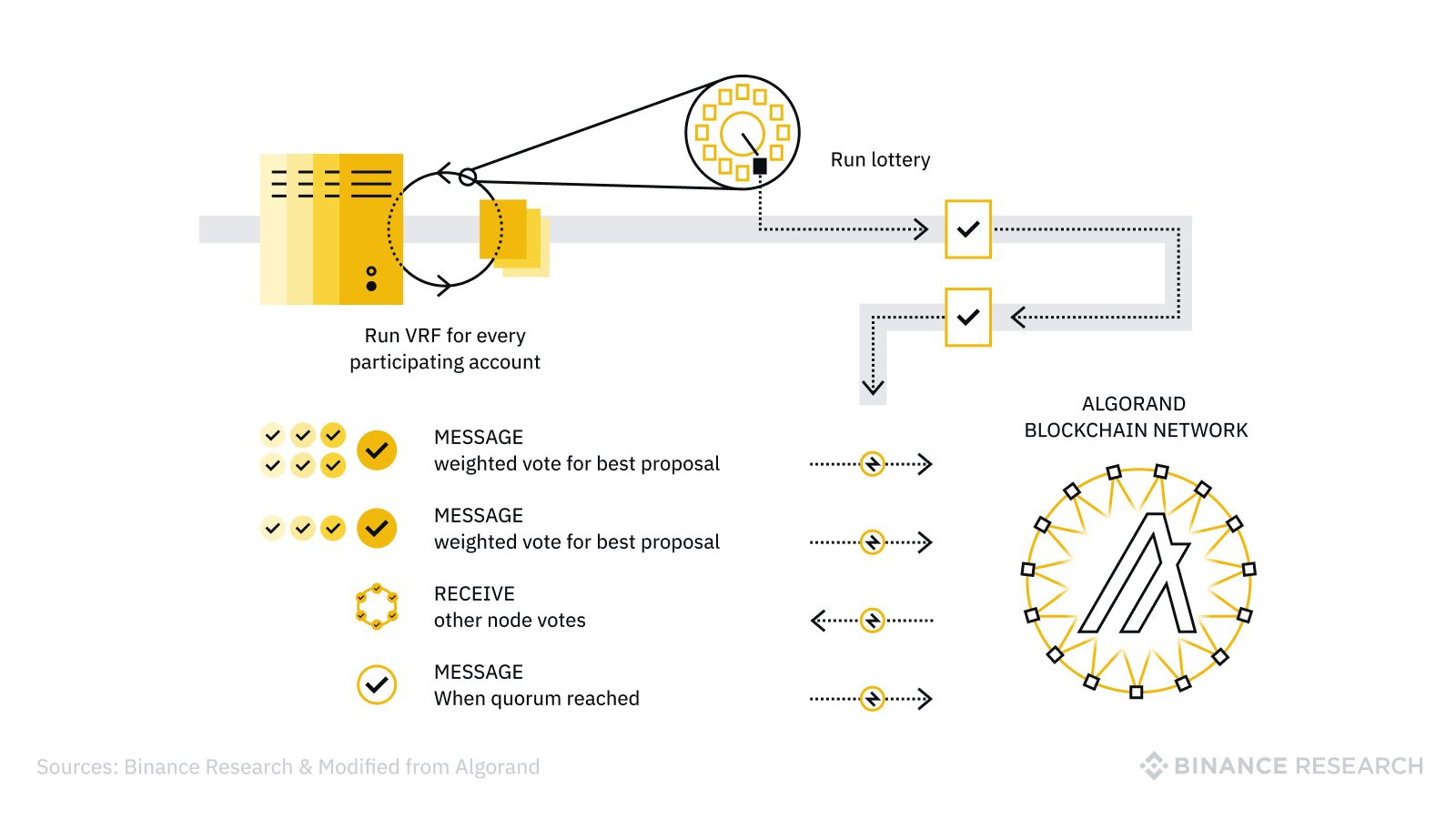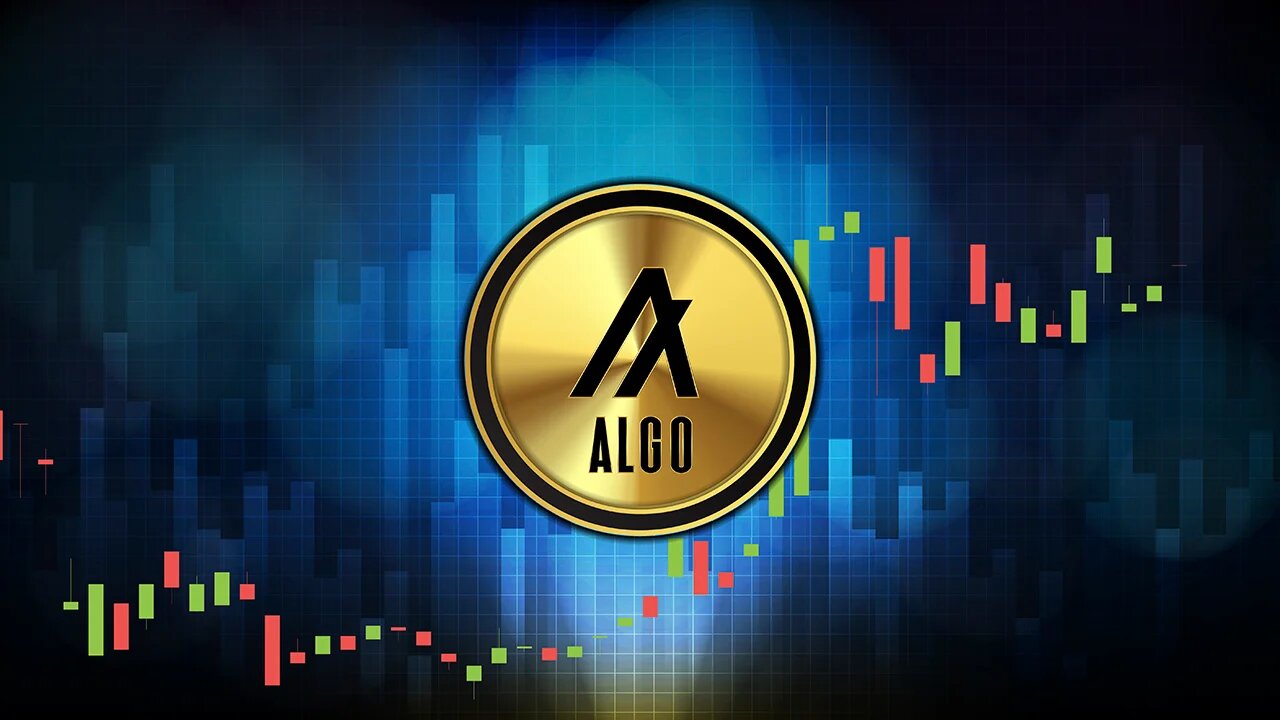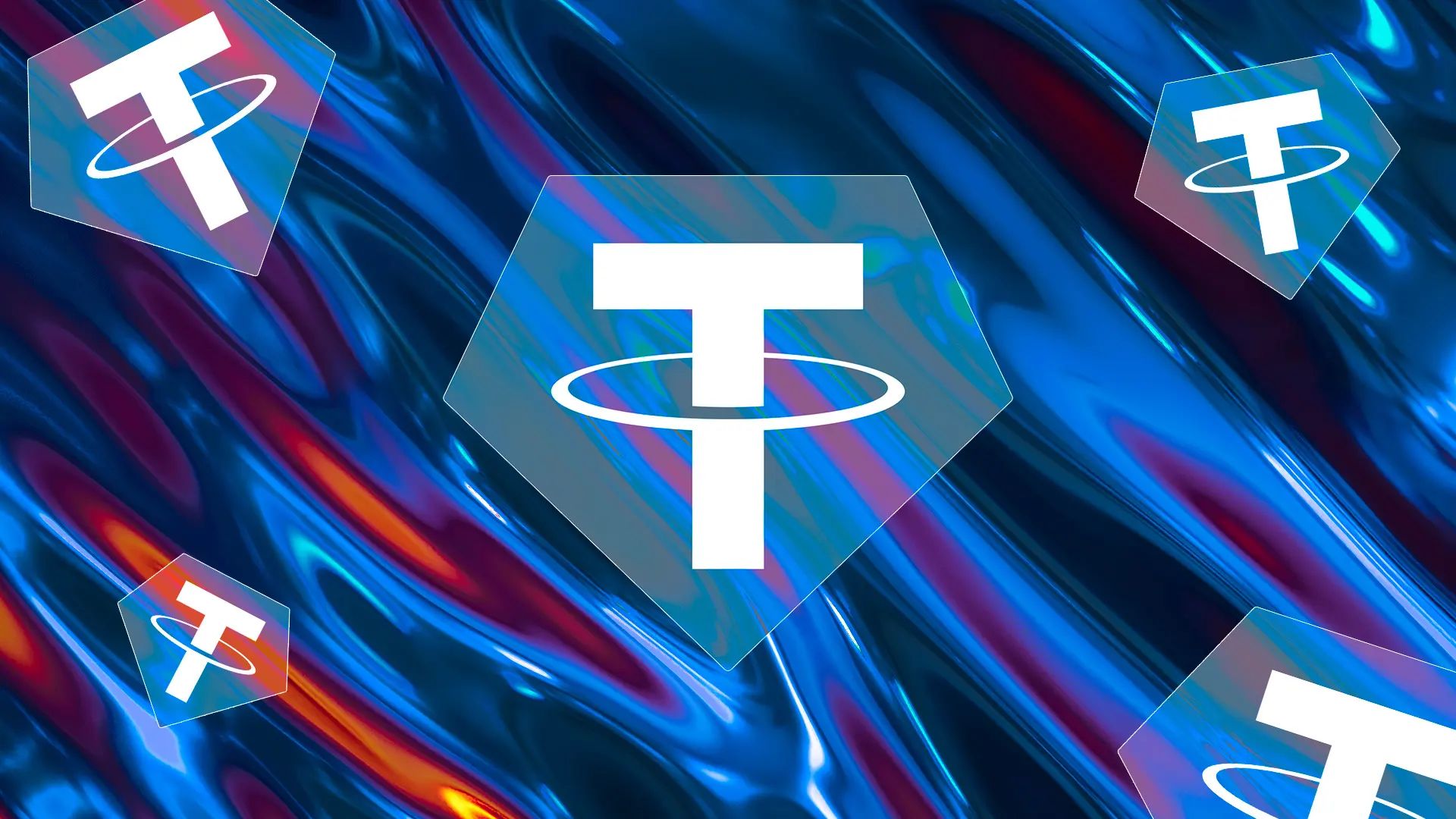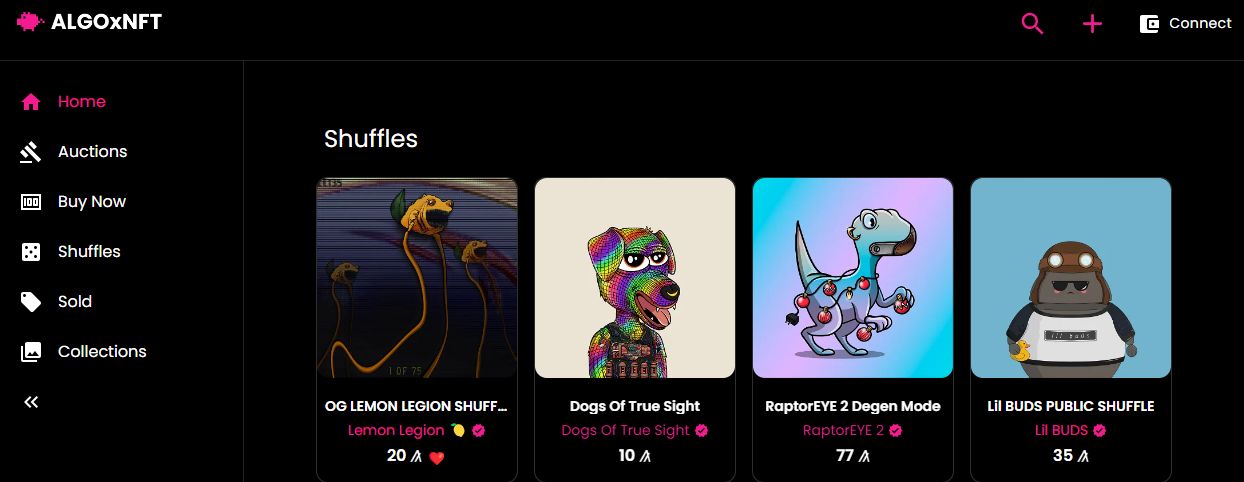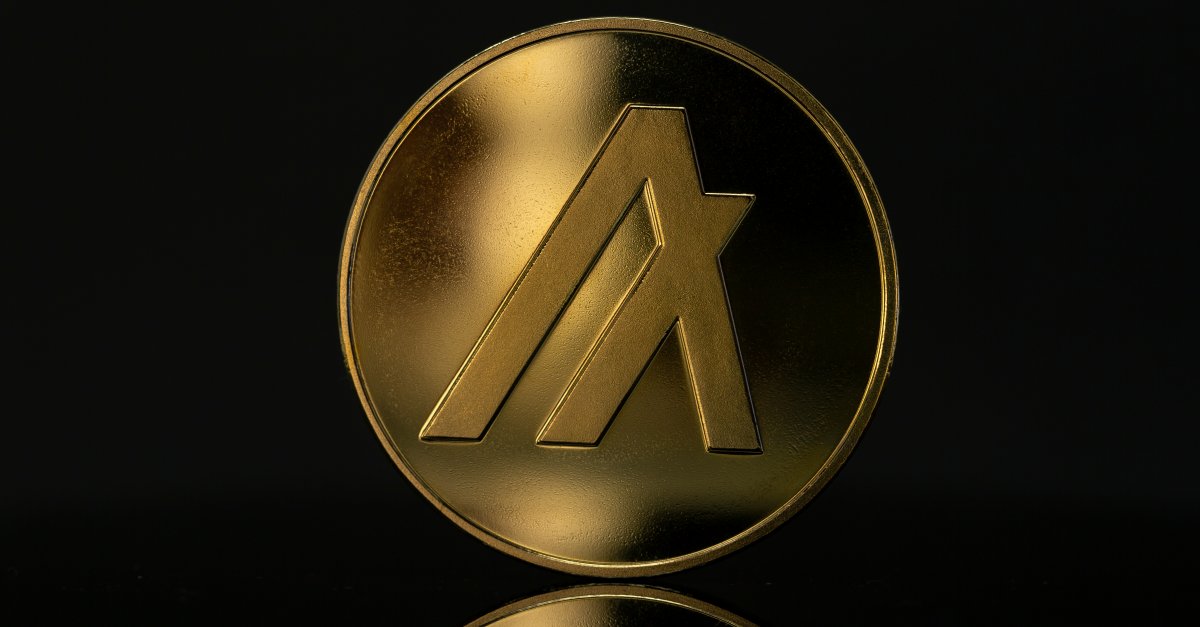Introduction
The Algorand blockchain platform is designed to revolutionize how digital transactions are conducted in terms of speed, security, and decentralization. Developed by Turing Award-winning cryptographer Silvio Micali, Algorand combines innovative consensus algorithms, advanced cryptography, and scalable solutions to create a blockchain network that is fast, secure, and highly efficient.
At its core, Algorand aims to address some of the major challenges facing existing blockchain networks, such as slow transaction processing times, high energy consumption, and scalability limitations. By leveraging its unique consensus algorithm, Algorand ensures quick and secure block confirmation, making it ideal for a variety of use cases including financial applications, decentralized applications (DApps), and more.
Unlike traditional proof-of-work (PoW) or proof-of-stake (PoS) consensus mechanisms, Algorand utilizes the Pure Proof-of-Stake (PPoS) algorithm. This algorithm allows a large number of participants to reach consensus on the state of the blockchain without the need for energy-intensive computations or centralization of power.
By eliminating the need for costly computations, Algorand significantly reduces the environmental impact and energy consumption associated with blockchain technology, making it a greener and more sustainable solution. Furthermore, the PPoS algorithm ensures that the network remains secure and decentralized, as it is not vulnerable to attacks from malicious actors or concentration of power.
Algorand’s core features include a robust and efficient block production process, fast and secure finalization of transactions, a diverse ecosystem of participants, a fair and rewarding governance mechanism, and support for smart contracts and DApps. By combining these features, Algorand offers a scalable and privacy-focused blockchain platform that can meet the needs of various applications and industries.
In the following sections, we will delve deeper into the key elements of Algorand’s architecture and explore how it provides a cutting-edge solution for the challenges faced by traditional blockchain networks. We will discuss the consensus algorithm, cryptography, block production process, finalization of transactions, participant roles, rewards and incentives, governance mechanism, smart contracts and DApps, as well as privacy and scalability. Let’s dive in!
Consensus Algorithm
The consensus algorithm employed by Algorand is known as Pure Proof-of-Stake (PPoS). Unlike traditional proof-of-work (PoW) algorithms used by Bitcoin and other cryptocurrencies, Algorand’s PPoS algorithm does not require participants to solve complex mathematical puzzles or compete for block rewards through energy-intensive computations. Instead, the algorithm utilizes a unique and efficient process to achieve consensus on the state of the blockchain.
In the Algorand network, participants are randomly selected to form a committee for each round of block production. This committee is responsible for proposing and validating new blocks. The selection process is designed to be fair and unbiased, ensuring that no individual or group can have undue influence over the consensus process.
Once the committee is formed, a key component of the PPoS algorithm is a cryptographic sortition process. This process randomly selects one participant from the committee to be the block proposer for the current round. The selection is done in a verifiable and transparent manner, ensuring that it cannot be manipulated or tampered with.
The selected block proposer is then responsible for creating a proposed block that includes transactions and obtains a cryptographic proof, called a verifiable random function (VRF) proof, to validate the block’s authenticity. This VRF proof is a cryptographic guarantee that the selected block proposer followed the correct process and did not manipulate the block’s content.
After creating the proposed block, the block proposer broadcasts it to the committee members for validation. The committee members, known as verifiers, validate the proposed block using the VRF proof and independently verify its correctness. This validation process ensures that the block proposer acted honestly and that the proposed block does not contain any invalid transactions.
Once the block is validated by the committee, it becomes part of the blockchain. This process is repeated in each round, with a new committee and block proposer selected randomly for each round. The random selection process ensures that the consensus stays decentralized and prevents any single participant from gaining control over the network.
The PPoS algorithm employed by Algorand provides several benefits. Firstly, it eliminates the need for energy-intensive computations, making it highly efficient and eco-friendly. Secondly, its random selection process ensures fairness and prevents the concentration of power in the network. Lastly, the algorithm enables a fast and secure block confirmation process, allowing for high throughput and quick transaction finalization.
In the following sections, we will explore other key aspects of Algorand’s architecture, including the cryptography behind its security, the block production process, fast and secure transaction finalization, participant roles, rewards and incentives, governance mechanism, smart contracts and DApps, as well as privacy and scalability.
Cryptography
Cryptography plays a critical role in ensuring the security and integrity of the Algorand blockchain. Algorand employs advanced cryptographic techniques to protect the confidentiality of transactions, verify the authenticity of participants, and guarantee the immutability of the blockchain.
One of the fundamental cryptographic tools used by Algorand is the digital signature scheme. Digital signatures provide a way for participants to prove the authenticity of their transactions and ensure that they cannot be tampered with. Algorand utilizes the EdDSA (Edwards-curve Digital Signature Algorithm) scheme, which is known for its efficiency, security, and resistance against various types of attacks.
Algorand also utilizes the cryptographic hash function SHA-512/256, which produces a fixed-length output called a hash. Hash functions are essential for ensuring the integrity of data by generating a unique identifier for each block in the blockchain. If even a single bit of the data changes, the resulting hash would be completely different, alerting the network to the presence of tampering.
Another key cryptographic technique employed by Algorand is verifiable random functions (VRFs). VRFs allow for the secure and verifiable selection of participants and the generation of random numbers, which are crucial for Algorand’s consensus algorithm. VRFs provide cryptographic proofs that allow network participants to independently verify their correct selection or randomness.
To enhance privacy, Algorand incorporates a technique called Pedersen commitments. Pedersen commitments allow participants to hide the amount and content of their transactions while still providing a verifiable proof of their validity. This ensures that Algorand transactions are secure and confidential, protecting sensitive information from prying eyes.
Algorand’s cryptography also extends to protecting the privacy of participants through the use of cryptographic keys. Each participant has a pair of cryptographic keys: a public key, which is shared with the network, and a private key, which remains secret. Through the use of these keys, participants can sign transactions, verify signatures, and ensure the authenticity and integrity of their interactions with the blockchain.
By leveraging cutting-edge cryptographic techniques, Algorand ensures the security, privacy, and integrity of its blockchain. The combination of digital signatures, hash functions, verifiable random functions, and Pedersen commitments enables participants to conduct transactions with confidence, knowing that their actions are protected from unauthorized access and tampering.
In the following sections, we will delve deeper into other fundamental aspects of Algorand, including its block production process, fast and secure transaction finalization, participant roles, rewards and incentives, governance mechanism, smart contracts and DApps, as well as privacy and scalability.
Block Production
In the Algorand blockchain, the process of block production is efficiently designed to ensure quick and secure addition of new blocks to the blockchain. This process facilitates fast transaction confirmation and helps in maintaining a high throughput.
The block production process in Algorand is based on a series of rounds, each consisting of a randomly selected committee of participants. The committee members are responsible for proposing and validating new blocks.
At the beginning of each round, a new committee is randomly selected from a large pool of participants. This random selection ensures decentralization and prevents any individual or group from dominating the block production process.
Within each committee, a block proposer is selected using a verifiable random function (VRF). This selection process guarantees fairness and transparency, ensuring that every participant has an equal chance of being chosen as the block proposer.
Once the block proposer is determined, they create a proposed block that includes a set of transactions. This block is then broadcasted to the other committee members for validation.
The validation process involves verifying the authenticity and correctness of the proposed block. Each committee member independently verifies the block using cryptographic proofs, including the VRF proof provided by the block proposer.
If the proposed block is found to be valid, it is added to the blockchain. However, if the proposed block is determined to be invalid or contains conflicting transactions, the committee rejects it, and a new round begins with a new randomly selected committee.
The block production process in Algorand has several advantages. Firstly, the random selection of participants ensures decentralization and prevents any concentration of power, making the network more secure and resistant to attacks. Secondly, the use of cryptographic proofs guarantees the authenticity and integrity of the proposed blocks, ensuring that only valid transactions are added to the blockchain.
Furthermore, the block production process in Algorand is designed to be highly efficient, enabling the network to achieve a high transaction throughput. The random selection of committees and block proposers allows for parallel processing of transactions, minimizing any potential bottlenecks and enhancing the overall scalability of the network.
In summary, the block production process in Algorand is a well-thought-out mechanism that ensures fast and secure addition of new blocks to the blockchain. By leveraging random selection, cryptographic proofs, and efficient validation, Algorand achieves high transaction throughput while maintaining the integrity and security of the network.
In the next sections, we will explore other critical elements of the Algorand blockchain, including the fast and secure finalization of transactions, participant roles, rewards and incentives, governance mechanism, smart contracts and DApps, as well as privacy and scalability.
Fast and Secure Finalization
In the Algorand blockchain, finalization refers to the process of confirming and permanently adding transactions to the blockchain. Algorand employs a unique and efficient finalization process that ensures fast and secure transaction confirmation, making it ideal for a wide range of applications.
Unlike some traditional blockchain networks that require multiple confirmations to consider a transaction final, Algorand achieves near-instantaneous finality. Once a block is added to the blockchain, the transactions it contains are considered final and cannot be reversed or tampered with.
The fast finality in Algorand is made possible by the consensus algorithm and the block production process. Through the use of a randomly selected committee of participants, the network reaches a consensus on the validity of the proposed blocks in each round. This consensus is achieved through the cryptographic verification of the proposed blocks and the acceptance of the longest chain as the valid chain.
Algorand’s finalization process is also highly secure. The cryptographic guarantees provided by the consensus algorithm and the use of verifiable random functions (VRFs) ensure that only valid blocks are added to the blockchain. The committee members independently validate each proposed block, making it difficult for malicious actors to manipulate the network or introduce invalid transactions.
Furthermore, due to the design of the Algorand blockchain, the finality of transactions is not compromised even in the presence of network delays or malicious behavior. The decentralized nature of the consensus algorithm and the committee selection process provide robustness and resilience against attacks, ensuring the integrity and security of the network.
Another key aspect of Algorand’s finalization process is the elimination of the traditional concept of block confirmation. In other blockchain networks, users often have to wait for a certain number of block confirmations before considering a transaction as final. With Algorand, the need for multiple confirmations is eliminated, allowing for faster transaction processing and improved user experience.
Overall, the fast and secure finalization process in Algorand sets it apart from other blockchain networks. By utilizing a unique consensus algorithm, cryptographic verification, and the elimination of multiple block confirmations, Algorand achieves near-instantaneous and tamper-proof transaction finality, making it an ideal platform for time-sensitive applications and financial transactions.
In the next sections, we will delve deeper into the participant roles, rewards and incentives, governance mechanism, smart contracts and DApps, as well as privacy and scalability in the Algorand blockchain.
Participants and Roles
The Algorand blockchain ecosystem consists of various types of participants who play vital roles in maintaining the network and ensuring its security and efficiency. These participants contribute to the consensus algorithm, block production, and validation processes, as well as overall governance and decision-making within the network.
One of the key participants in the Algorand network is the block proposer. The block proposer is responsible for creating a proposed block that includes a set of transactions and obtaining a cryptographic proof, known as the verifiable random function (VRF) proof. The block proposer is selected randomly from the committee for each round, ensuring fairness and preventing centralization of power.
Another important participant in the Algorand ecosystem is the committee member. The committee members are randomly selected for each round and play a crucial role in validating the proposed blocks by verifying the VRF proof and independently validating the correctness of the block. The committee members collectively ensure the integrity and security of the blockchain network.
In addition to the block proposers and committee members, Algorand also includes regular network participants who contribute to the network’s operations. These participants can hold and transfer Algorand’s native cryptocurrency, ALGO, and participate in consensus and governance mechanisms. They can run their own Algorand nodes and participate in decision-making processes, such as voting on protocol upgrades and changes.
Furthermore, Algorand allows for the existence of relay nodes. Relay nodes provide network connectivity and help disseminate information across the network. They play a critical role in ensuring that transactions, blocks, and other network data are efficiently transmitted to all participants, enhancing the overall efficiency and robustness of the network.
Algorand’s architecture also allows for the participation of developers and entrepreneurs who build and deploy decentralized applications (DApps) on the platform. These individuals or organizations leverage Algorand’s smart contract capabilities to create innovative and secure DApps across various industries, including finance, supply chain management, gaming, and more.
Each participant in the Algorand network has a role to play in maintaining the decentralized nature of the network, securing the blockchain, and contributing to the growth and development of the ecosystem. Together, they form a diverse and distributed community that ensures the integrity, security, and efficiency of the Algorand blockchain.
In the following sections, we will explore other important aspects of the Algorand blockchain, including rewards and incentives, the governance mechanism, smart contracts and DApps, as well as privacy and scalability.
Rewards and Incentives
In the Algorand blockchain, participants are rewarded for their contributions to the network, ensuring the continuous operation and security of the platform. Algorand employs a system of rewards and incentives to encourage active participation and promote a fair and sustainable ecosystem.
One of the key mechanisms for rewarding participants in the Algorand network is through the allocation of new tokens. When a new block is added to the blockchain, a certain number of ALGO tokens are minted and distributed to the block proposer as a reward. This creates an incentive for participants to actively contribute to the block production process by proposing valid blocks.
Additionally, participants who are selected to be part of the committee for each round also receive rewards for their role in validating the proposed blocks. This incentivizes committee members to independently verify and validate the correctness of the proposed blocks, ensuring the integrity and security of the network.
Furthermore, Algorand introduces a mechanism called the participation stake. Participants can voluntarily “stake” their ALGO tokens as a way to show their commitment and trustworthiness to the network. Stakers have the opportunity to be selected more frequently as block proposers or committee members, increasing their chances of earning rewards. This mechanism promotes long-term participation and stability within the Algorand ecosystem.
Algorand also incorporates a governance mechanism that allows participants to propose and vote on protocol upgrades, changes, or new features. This democratic governance system gives participants a voice in determining the future direction of the blockchain. Those who actively participate in the governance process are rewarded for their engagement, ensuring that important decisions are made collaboratively and inclusively.
The rewards and incentives in the Algorand blockchain not only motivate participants to actively contribute to the network but also ensure the decentralization and security of the platform. By distributing rewards to block proposers, committee members, and active stakers, Algorand encourages a diverse and engaged community that collectively strengthens the network.
Overall, the rewards and incentives in Algorand create a positive feedback loop where participants are motivated to actively contribute to the network’s operations and governance. This system helps maintain a fair and sustainable ecosystem, driving innovation, and fostering the long-term success of the Algorand blockchain.
In the next sections, we will explore other important aspects of the Algorand blockchain, including the governance mechanism, smart contracts and DApps, as well as privacy and scalability.
Governance Mechanism
The Algorand blockchain incorporates a decentralized governance mechanism that allows participants to have a say in the decision-making process and the future development of the platform. This democratic system ensures that the Algorand network evolves in a collaborative and inclusive manner.
One of the key features of the Algorand governance mechanism is the ability for participants to propose and vote on protocol upgrades, changes, and new features. This allows the community to collectively determine the direction and improvements of the network. Proposals can be submitted by any participant, and the entire community has the opportunity to vote on them.
Algorand utilizes a voting mechanism known as the Algorand Standard Asset (ASA) governance proposal. Each participant’s voting power is proportional to their stake in the network. Participants who hold more ALGO tokens have a greater influence on the outcome of the voting process. This ensures that decisions are made fairly, taking into account the opinions and preferences of the majority.
The governance mechanism in Algorand is designed to be open and transparent. All proposals and voting records are publicly accessible, allowing participants to fully understand the decision-making process and any changes being proposed. This transparency enhances trust and accountability within the community.
Furthermore, the Algorand governance mechanism allows for the integration of off-chain governance systems. This enables the Algorand network to collaborate with external organizations, such as industry consortia or regulatory bodies, to make informed decisions that align with broader industry standards and regulations.
The decentralized governance mechanism in Algorand ensures that no single entity or group has absolute control over the network. Instead, decisions are made collectively, taking into account the perspectives and interests of the wider community. This promotes a fair and inclusive ecosystem where participants have the opportunity to actively shape the future of the platform.
By giving participants the power to propose and vote on changes, the governance mechanism in Algorand fosters innovation and responsiveness to evolving needs. It also promotes the long-term sustainability and adaptability of the platform, ensuring that it can effectively address new challenges and opportunities.
In summary, the decentralized governance mechanism in Algorand empowers participants to contribute to the decision-making process and actively shape the future development of the platform. Through transparent proposals and voting, the Algorand community works collaboratively to create a resilient and forward-thinking ecosystem.
In the next sections, we will explore other important aspects of the Algorand blockchain, including smart contracts and DApps, as well as privacy and scalability.
Smart Contracts and DApps
The Algorand blockchain provides a robust and secure environment for executing smart contracts and building decentralized applications (DApps). Smart contracts are self-executing contracts with the terms of the agreement directly written into code, whereas DApps are applications that leverage blockchain technology to enable decentralized and transparent functionality.
Algorand supports Turing-complete smart contracts, allowing developers to create highly sophisticated and customizable applications. These smart contracts are programmed using a language called Smart Contract Markup Language (SCAML) which is specifically designed for the Algorand ecosystem. SCAML encompasses a wide range of functionality and features, providing developers with the flexibility to create complex and innovative applications.
The Algorand blockchain ensures the security and reliability of smart contracts through its decentralized consensus mechanism and advanced cryptographic techniques. Once a smart contract is deployed on the Algorand network, it becomes part of the immutable blockchain, guaranteeing that the code and its execution cannot be tampered with.
In addition to smart contracts, Algorand enables the development and deployment of decentralized applications (DApps). DApps built on Algorand benefit from the network’s high throughput, fast finality, and low transaction fees. These characteristics make Algorand an attractive platform for various industry verticals, including finance, supply chain management, gaming, and more.
Furthermore, Algorand’s support for asset creation and management allows developers to tokenize assets and create their own custom tokens within the Algorand ecosystem. This feature brings the benefits of blockchain technology to the tokenization of real-world assets, enabling new and innovative use cases such as fractional ownership, real estate, and supply chain tracking.
To assist developers, Algorand provides a comprehensive set of tooling and SDKs (Software Development Kits). These development tools and libraries simplify the creation and deployment of smart contracts and DApps on the Algorand network. The developer community also actively contributes to the Algorand ecosystem through the creation of tutorials, documentation, and open-source projects, fostering a vibrant and supportive ecosystem.
The combination of smart contracts, DApps, and tokenization capabilities makes Algorand a powerful platform for creating innovative and decentralized solutions. Developers can leverage the security, scalability, and speed of the Algorand network to build applications that offer transparent and efficient functionality across various industries.
In the following sections, we will explore other crucial aspects of the Algorand blockchain, including privacy and scalability, in order to gain a comprehensive understanding of the Algorand ecosystem and its capabilities.
Privacy and Scalability
The Algorand blockchain prioritizes both privacy and scalability, addressing crucial challenges faced by traditional blockchain networks. Algorand utilizes innovative techniques to ensure the privacy of transactions and the scalability of the overall network.
Privacy is a fundamental aspect of the Algorand blockchain. While the network is transparent and immutable, Algorand incorporates cryptographic techniques to protect the privacy of participants and their transactions. By utilizing Pedersen commitments, Algorand allows participants to hide the amount and content of transactions while still providing a verifiable proof of their validity. This ensures that sensitive information remains private and secure.
Algorand also incorporates privacy-enhancing features through the separation of transaction validation and the broadcasting of transactions. This separation ensures that only the necessary information is publicly disclosed, preventing potential information leakage and protecting the privacy of participants.
Scalability is another key focus of the Algorand blockchain. Traditional blockchain networks often face challenges in terms of transaction throughput and confirmation times. Algorand addresses these scalability issues by utilizing a unique consensus algorithm and a block production process that allows for high transaction throughput.
The Pure Proof-of-Stake (PPoS) consensus algorithm employed by Algorand enables rapid block confirmation and finality, ensuring near-instantaneous transaction processing. With its efficient block production process and parallel transaction validation, Algorand achieves high throughput, allowing for thousands of transactions to be processed per second.
To further enhance scalability, Algorand employs a system of stateless clients. Traditional blockchain networks require clients to store the entire history of the blockchain, which can be resource-intensive and limits scalability. Algorand’s stateless client architecture allows participants to interact with the blockchain without the need for storing large amounts of data, significantly improving the scalability and reducing the resource requirements of the network.
By combining privacy-enhancing features with efficient scalability measures, Algorand provides a blockchain platform that can meet the demands of various applications and industries. The privacy features ensure the confidentiality and integrity of transactions, protecting sensitive information, while the scalability measures enable a high-performance network capable of handling a large volume of transactions.
In summary, Algorand is committed to preserving privacy and scalability within its blockchain ecosystem. Through the implementation of privacy-enhancing techniques and efficient scalability measures, Algorand ensures that the network can accommodate the needs of a wide range of applications while maintaining the privacy and security of participants.
In the next sections, we will explore other important aspects of the Algorand blockchain, concluding with a comprehensive understanding of the Algorand ecosystem and its potential for revolutionizing the way digital transactions are conducted.
Conclusion
The Algorand blockchain platform represents a groundbreaking solution that addresses the challenges faced by traditional blockchain networks. Through its unique consensus algorithm, Pure Proof-of-Stake (PPoS), Algorand achieves fast and secure block confirmation, making it ideal for a wide range of applications.
Algorand’s architecture incorporates advanced cryptographic techniques, ensuring the security, privacy, and integrity of transactions. By employing digital signatures, cryptographic hash functions, verifiable random functions (VRFs), and Pedersen commitments, Algorand provides a robust and secure environment for conducting digital transactions.
The network’s block production process is designed to be efficient and decentralized, allowing for high transaction throughput and rapid finality. With its random selection of committees and block proposers, Algorand ensures fairness, prevents concentration of power, and enhances network security.
Algorand’s ecosystem includes various participant roles, such as block proposers, committee members, relay nodes, and developers, each contributing to the network’s operations and success. With a governance mechanism that enables participants to propose and vote on changes, Algorand ensures a democratic and inclusive decision-making process within the network.
The platform also supports the creation of smart contracts and decentralized applications (DApps) through its Turing-complete programming language, SCAML. This allows developers to build innovative and secure applications within the Algorand ecosystem, benefiting from the network’s high throughput, fast finality, and low transaction fees.
Privacy and scalability are paramount in the Algorand blockchain. The network utilizes techniques such as Pedersen commitments, stateless clients, and separation of transaction validation to ensure the privacy of participants, while the unique consensus algorithm and efficient block production process enable high transaction throughput and rapid confirmation times.
The Algorand blockchain offers a promising solution for numerous industries and applications, including finance, supply chain management, gaming, and more. It provides an efficient, secure, and decentralized platform that can facilitate a wide range of digital transactions with speed and reliability.
With its commitment to privacy, scalability, security, and inclusivity, Algorand has the potential to revolutionize how digital transactions are conducted, setting new standards for blockchain technology. The ecosystem continues to grow and evolve, driven by a vibrant community of participants, developers, and innovators.
In summary, Algorand presents a cutting-edge blockchain platform that combines innovative consensus algorithms, advanced cryptography, and scalable solutions to create a fast, secure, and highly efficient network. It represents a significant step forward in the evolution of blockchain technology and holds immense potential for transforming various industries and enabling new groundbreaking applications.







